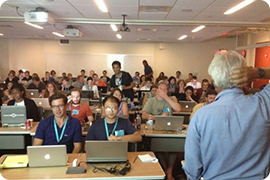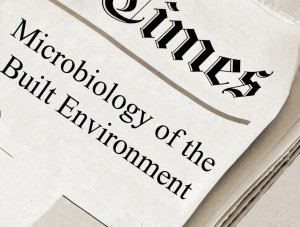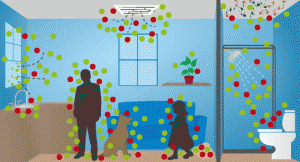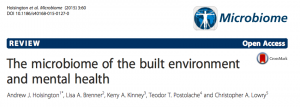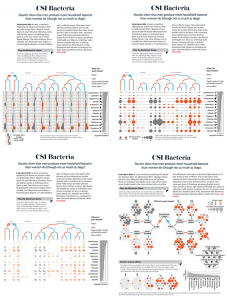The Marine Biological Laboratory in Woods Hole. MA will be offering their “STAMPS”: (Strategies & Techniques for Analyzing Microbial Population Structures) Course this August (8/3-8/13). Course Dates: August 3 — August 13, 2016 Deadline: April 8, 2016 | Apply here Course Website Course Schedule Directors: Mitchell L. Sogin, MBL and David B. Mark Welch, MBL …
This paper by John Chase and crew posted recently on PeerJ takes a deep look at the office microbiome composition and concludes that the biggest factors affecting differences in swabbed samples are the geography of the office and where the sample was taken inside it. Their experiment showed minimal impact from other factors that are …
Last week I had the opportunity to present a lecture on the history of DNA sequencing in Jonathan Eisen’s EVE 161 Microbial Phylogenomics course. This lecture uses Elaine Mardis’ excellent review papers on the next generation sequencing methods as a guide (and required reading). You can see videos of both Dr. Mardis and Dr. Eisen presenting lectures on this topic. …
I made a Storify summary of the Tweets from a workshop at the Pacific Symposium on Biocomputing that I attended on Tuesday on Computational Microbiology (with a big focus on microbiomes). [<a href="//storify.com/phylogenomics/psb16-session-on-microbiomes” target=”_blank”>View the story “#PSB16 session on computational microbiome #microbiomes ” on Storify]
Pat Schloss (pdschloss at gmail.com) offers excellent workshops on the Mothur software for analyzing 16S rRNA data for bacteria. He’s just announced the next one (February 8 to 10, 2016 near the Detroit airport). I had the pleasure of attending the December workshop. A diverse and international group attended the workshop, with many folks who are interested in the human microbiome. …
Source: Relative and contextual contribution of different sources to the composition and abundance of indoor air bacteria in residences | Microbiome | Full Text Another very useful paper from the Microbiome journal. This one from Marzia Miletto and Steven Lindow. Here is the Abstract: Abstract Background The study of the microbial communities in the built …
2013-5-19MBPF Source: Sources of airborne microorganisms in the built environment | Microbiome | Full Text Really nice new review paper by Aaron Prissin and Linsey Marr. It covers research on sources of airborne microbes including Humans Pets Plants Plumbing HVACs Water damage Dust Outdoor air Really thorough with tons of references and discussion of the …
Source: The microbiome of the built environment and mental health | Microbiome | Full Text Andrew J. Hoisington, Lisa A. Brenner, Kerry A. Kinney, Teodor T. Postolache and Christopher A. Lowry When I saw the title of this I cringed a bit, worried that this paper would be overselling what we know about the microbiome and …
Behind the scenes: Microbial biogeography of a university campus My name is Ashley Ross (@ashanneross) and, during my final year as an undergraduate student in the Department of Biology at the University of Waterloo, I began to wonder which microorganisms I was contacting on a daily basis while on campus. Every day on my way …
Designers Martin Krzywinski and Barbara Jeannie Hunnicutt provide a peek behind the scenes, and explain how they developed a data visualization based on bacterial genome information derived from dust. Source: The Evolution of a Scientific American Infographic: Secret Life in Household Dust – Scientific American Blog Network This is an absolutely fascinating look behind the …
